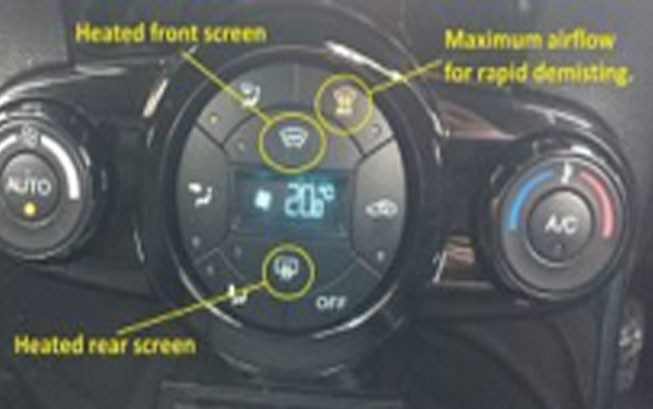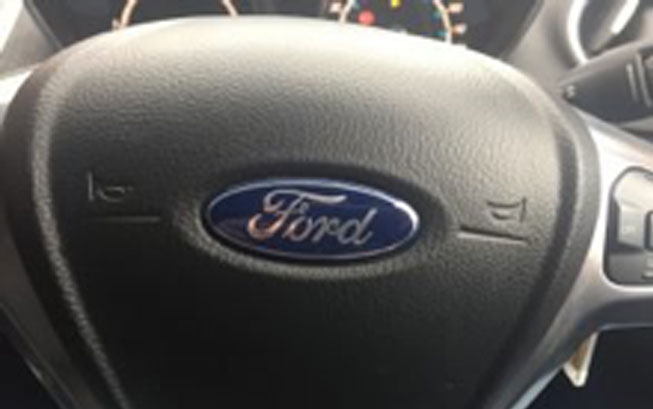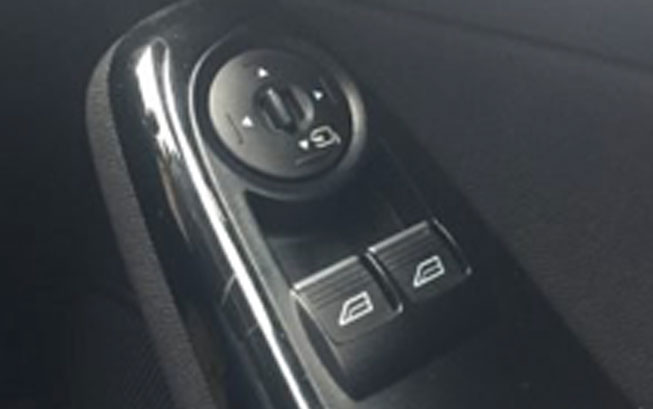SHOW ME TELL ME QUESTIONS
Candidates will be asked 1 of a possible 14 ‘Tell Me’ questions. This question will be asked at the start of the test before driving. It should be noted that for questions 10 and 11 the candidate will have to actually operate switches and not just explain.
Brakes should be tested as you set off. They should not feel spongy or slack and the vehicle should not pull to one side.
Tyre pressures can be found in the Manufacturer’s guide. You should use a reliable pressure gauge, check and adjust pressures when the tyres are cold. Don’t forget the spare tyre and remember to refit valve caps.
The head restraint should be adjusted so the rigid part of the head restraint is at least as high as the eye or top of the ears, and as close to the back of the head as is comfortable. Note: Some restraints might not be adjustable.
The tyre should have no cuts and bulges. It should have a minimum of 1.6mm of tread depth across the central three-quarters of the breadth of the tyre, and around the entire outer circumference.
Explain you’d operate the switch (turn on ignition if necessary), then walk round vehicle (as this is a ‘tell me’ question, you don’t need to physically check the lights).
A warning light should illuminate if there is a fault with the anti-lock braking system.
Explain you’d operate the hazard warning lights switch (turn on ignition if necessary), and then walk round vehicle (as this is a ‘tell me’ question, you don’t need to physically check the lights).
Explain you’d operate the brake pedal, make use of reflections in windows or doors, or ask someone to help.
If the steering becomes heavy, the system may not be working properly. Before starting a journey, 2 simple checks can be made.
Gentle pressure on the steering wheel, maintained while the engine is started, should result in a slight but noticeable movement as the system begins to operate. Alternatively turning the steering wheel just after moving off will give an immediate indication that the power assistance is functioning.
Operate switch (turn on dipped headlights and ignition if necessary). Check warning light is on. Explain that you would use them if visibility is reduced to below 100m.
Operate switch (with ignition or engine on if necessary), check with the main beam warning light.
Identify dipstick/oil level indicator, describe wiping the dipstick and check of oil level against the minimum and maximum markers.
Identify high and low level markings on header tank where fitted or radiator filler cap, and describe how to top up to correct level.
Identify reservoir, check level against high and low markings.
Driving lessons Show me questions
You will be asked one of the following ‘Show Me’ questions during the drive. You must select an opportune moment when you can carry out the task safely. If you are unsure which switch to operate, then the examiner will ask you to pull over and show you the relevant switch. You will then be asked once again on the move. A ‘serious’ or ‘dangerous’ fault could be incurred if safety is compromised during the operation of the switch.
The images shown are from a Ford Fiesta. However, the symbols for each switch are universal in most makes of car.

1. When it’s safe to do so, can you show me how you wash and clean the rear windscreen?
2. When it’s safe to do so, can you show me how you wash and clean the front windscreen?

3. When it’s safe to do so, can you show me how you’d switch on your dipped headlights?

4. When it’s safe to do so, can you show me how you’d set the rear demister?
5. When it’s safe to do so, can you show me how you’d demist the front windscreen?

6. When it’s safe to do so, can you show me how you’d operate the horn?

7. When it’s safe to do so, can you show me how you’d open and close the side window?












